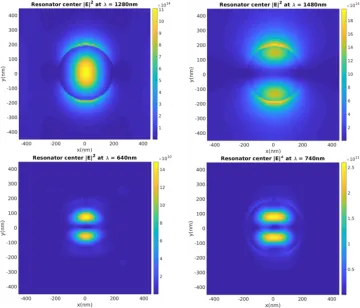Another Wavelength: Aoxue Han

This month in Another Wavelength, we chat with 2nd year Ph.D. candidate, Aoxue Han. Aoxue is currently mentored by Jerome V. Moloney.
Where are you from?
I am from Tianjin, a coastal city in northern China.
What brought you to study optics?
I have loved and developed an aptitude for physics since childhood. After winning a prize in Chinese Physics Olympiad, I entered Peking University to study physics without taking the entrance exam. During my sophomore year, I attended Dr. Yun-Feng Xiao’s lecture on optical microcavities and was attracted to the extensive applications, such as biosensing and low threshold lasers. So, I joined Dr. Xiao’s group and started my undergraduate research on whispering-gallery modes lasing. I have decided to go on exploring optics since then.
Who is your hero in science?
I think Marie Curie is my hero in science. She won a Nobel Prize in physics for research on the radiation phenomena and a Nobel Prize in chemistry for the discovery of the elements radium and polonium. I read the book “Madame Curie: A Biography” when I was very young and was influenced by it a lot. I was inspired by her great achievements and impressed by her noble character. It’s my childhood dream to become a distinguished scientist like Madame Curie and to make a contribution to society.

Electrical field distribution at first and second harmonics under different resonant modes
This figure shows the electric field distribution at the center of a GaAs resonator. Figures in the first and second row are the fields of first and second harmonics, respectively. The first column and second column shows two different resonant modes.
Describe your research in 20 words or fewer.
I work in Dr. Jerome V. Moloney’s lab focusing on second-order optical nonlinearity of nanostructures.
Describe your research in 200 words or fewer.
Nanoscale interactions between light and matter are not only interesting scientific problems but are also showing great promise in applications such as nonlinear optics, lasers, and sensing--typically based on high-Q optical resonators and plasmon resonance sensors. Metamaterials, especially, provide us a way to generate materials with artificial properties. Currently, I am working on the implementation of nonlinear Lorentz model in ACMS parallel 3D-FDTD Maxwell solver and use it to simulate second harmonic generation (SHG) from semiconductor metasurfaces numerically. Later, I will try to implement a hydrodynamic model to include SHG from a metallic material. This will provide us a self-consistent way to explore the nonlinearity properties of nanostructures.
Name three neat facts about you.
1. I always want to have a panda as a pet which is absolutely impossible, so I am obsessed with videos about pandas now.
2. I built an optics-aided painting system and used it to paint an oil painting during my last semester of undergraduate.
3. I am a Whovian. Allons-y!
